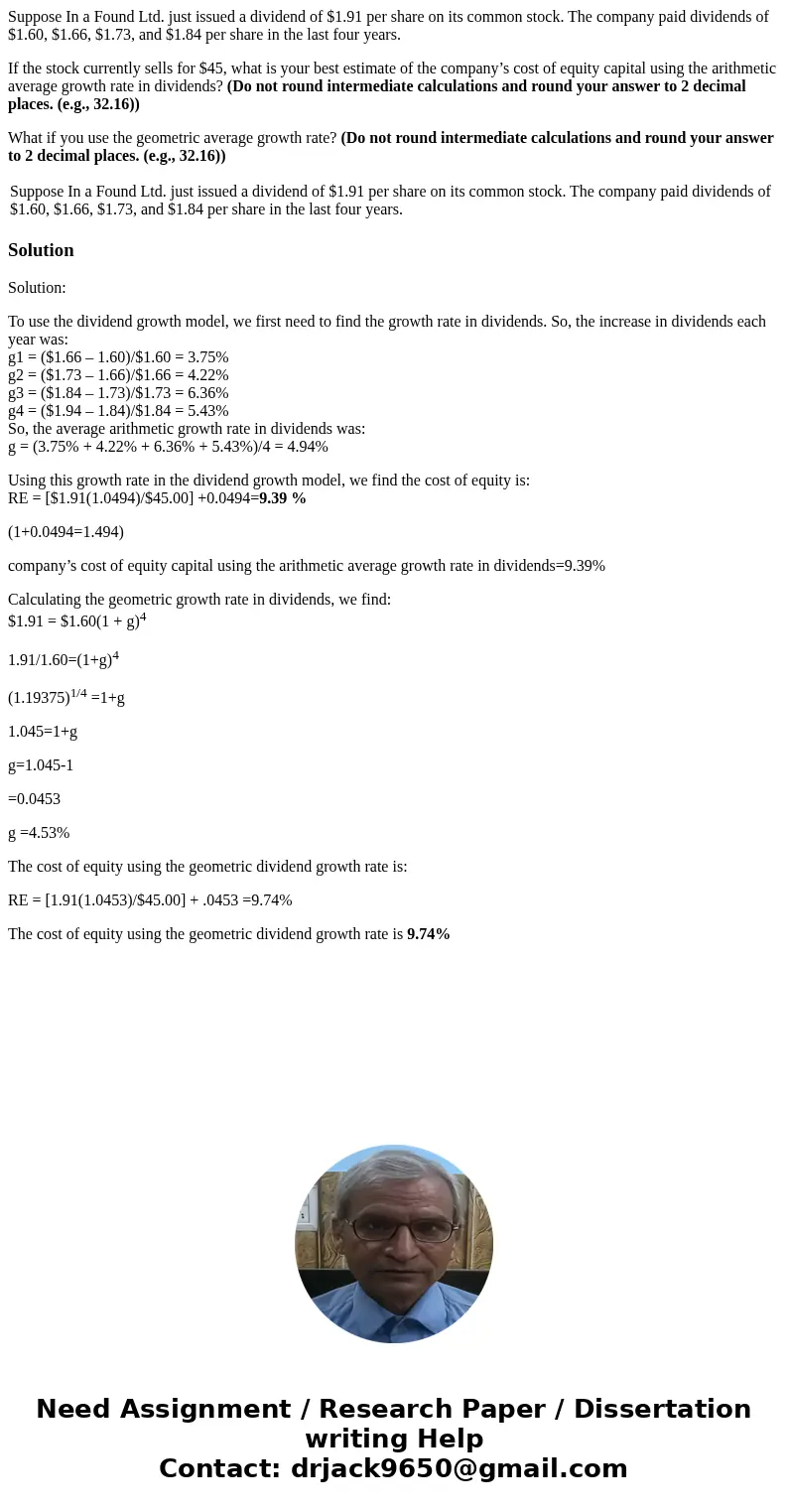Suppose In a Found Ltd just issued a dividend of 191 per sha
Suppose In a Found Ltd. just issued a dividend of $1.91 per share on its common stock. The company paid dividends of $1.60, $1.66, $1.73, and $1.84 per share in the last four years.
If the stock currently sells for $45, what is your best estimate of the company’s cost of equity capital using the arithmetic average growth rate in dividends? (Do not round intermediate calculations and round your answer to 2 decimal places. (e.g., 32.16))
What if you use the geometric average growth rate? (Do not round intermediate calculations and round your answer to 2 decimal places. (e.g., 32.16))
| Suppose In a Found Ltd. just issued a dividend of $1.91 per share on its common stock. The company paid dividends of $1.60, $1.66, $1.73, and $1.84 per share in the last four years. |
Solution
Solution:
To use the dividend growth model, we first need to find the growth rate in dividends. So, the increase in dividends each year was:
g1 = ($1.66 – 1.60)/$1.60 = 3.75%
g2 = ($1.73 – 1.66)/$1.66 = 4.22%
g3 = ($1.84 – 1.73)/$1.73 = 6.36%
g4 = ($1.94 – 1.84)/$1.84 = 5.43%
So, the average arithmetic growth rate in dividends was:
g = (3.75% + 4.22% + 6.36% + 5.43%)/4 = 4.94%
Using this growth rate in the dividend growth model, we find the cost of equity is:
RE = [$1.91(1.0494)/$45.00] +0.0494=9.39 %
(1+0.0494=1.494)
company’s cost of equity capital using the arithmetic average growth rate in dividends=9.39%
Calculating the geometric growth rate in dividends, we find:
$1.91 = $1.60(1 + g)4
1.91/1.60=(1+g)4
(1.19375)1/4 =1+g
1.045=1+g
g=1.045-1
=0.0453
g =4.53%
The cost of equity using the geometric dividend growth rate is:
RE = [1.91(1.0453)/$45.00] + .0453 =9.74%
The cost of equity using the geometric dividend growth rate is 9.74%

 Homework Sourse
Homework Sourse